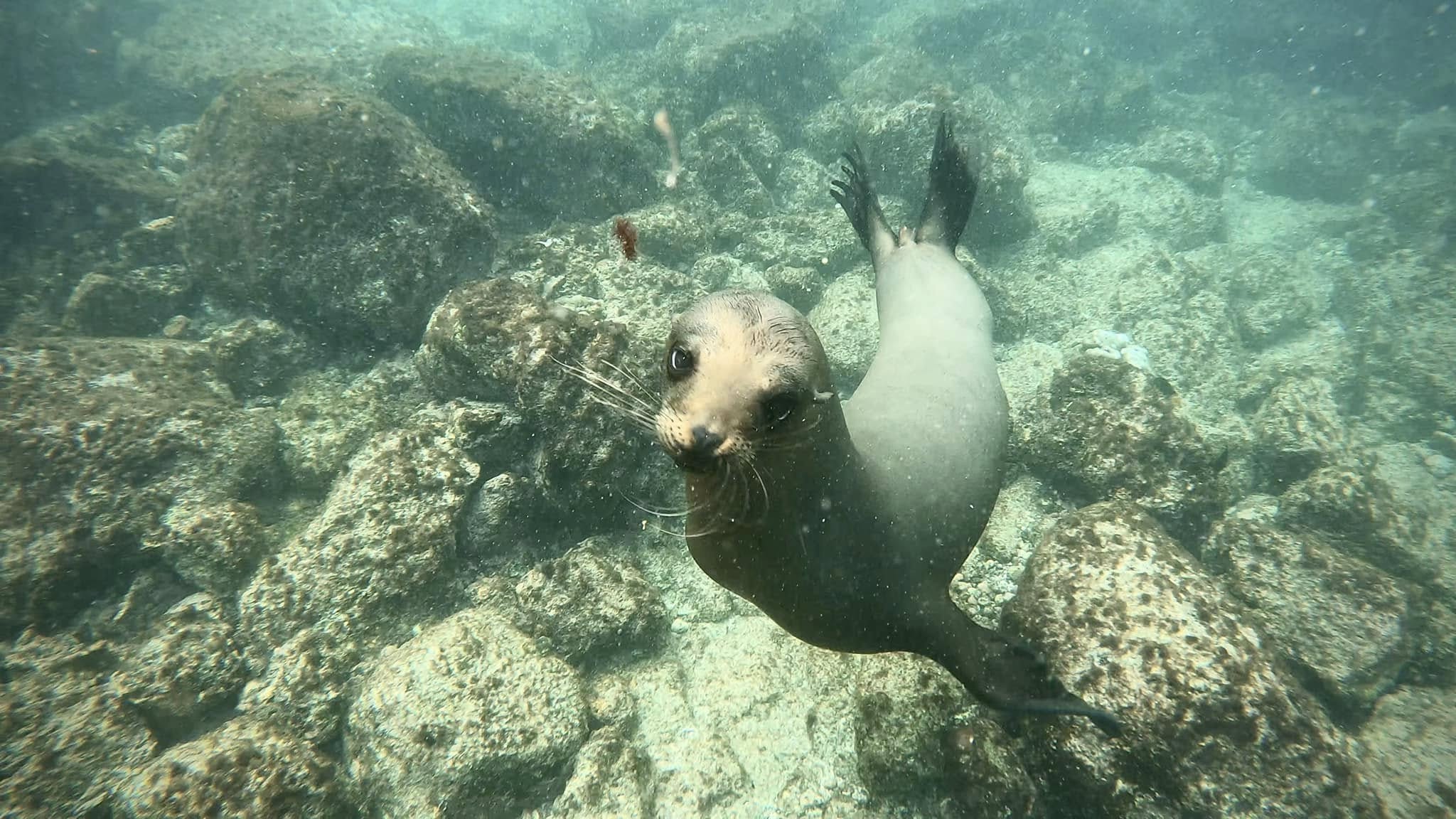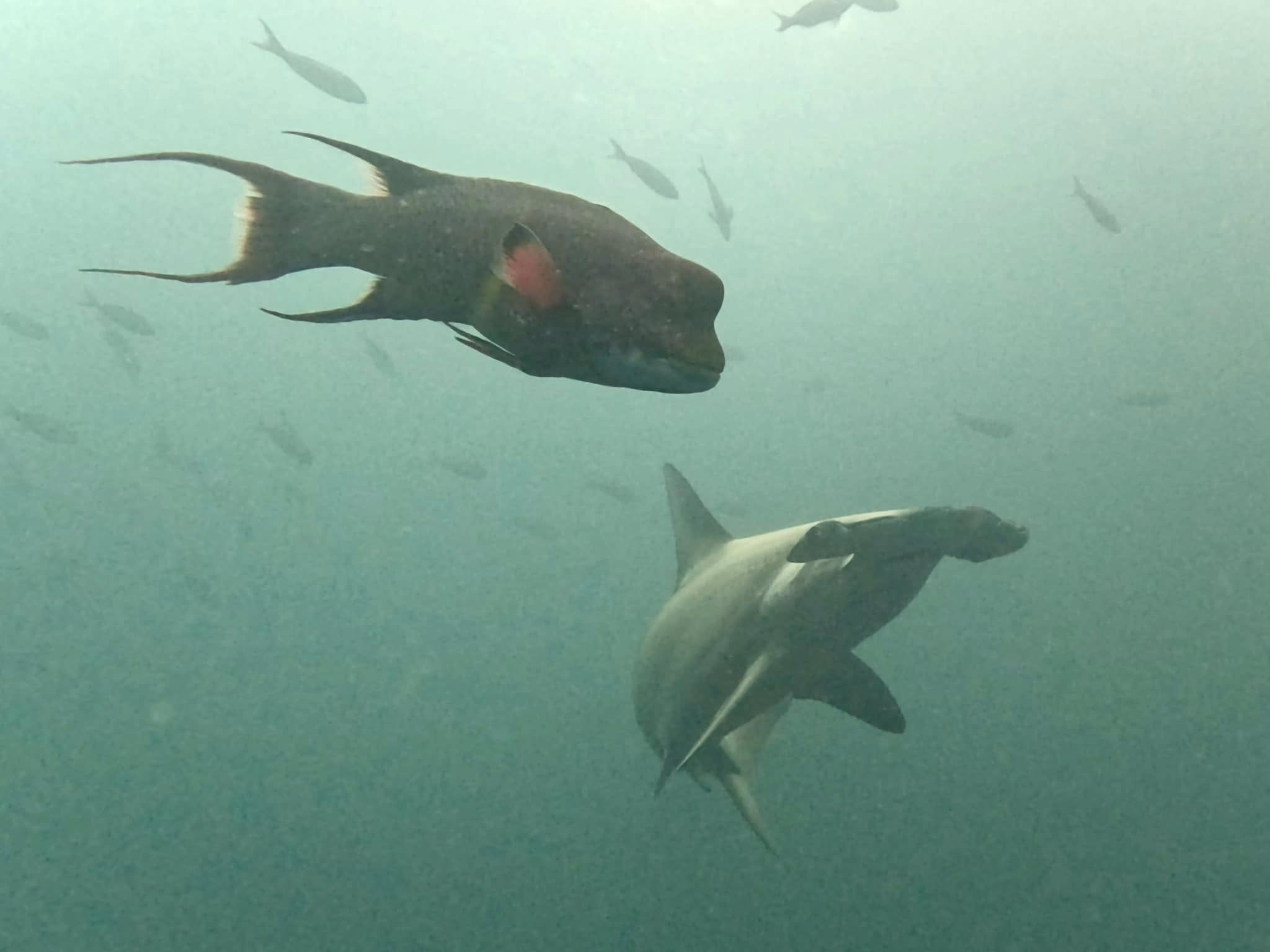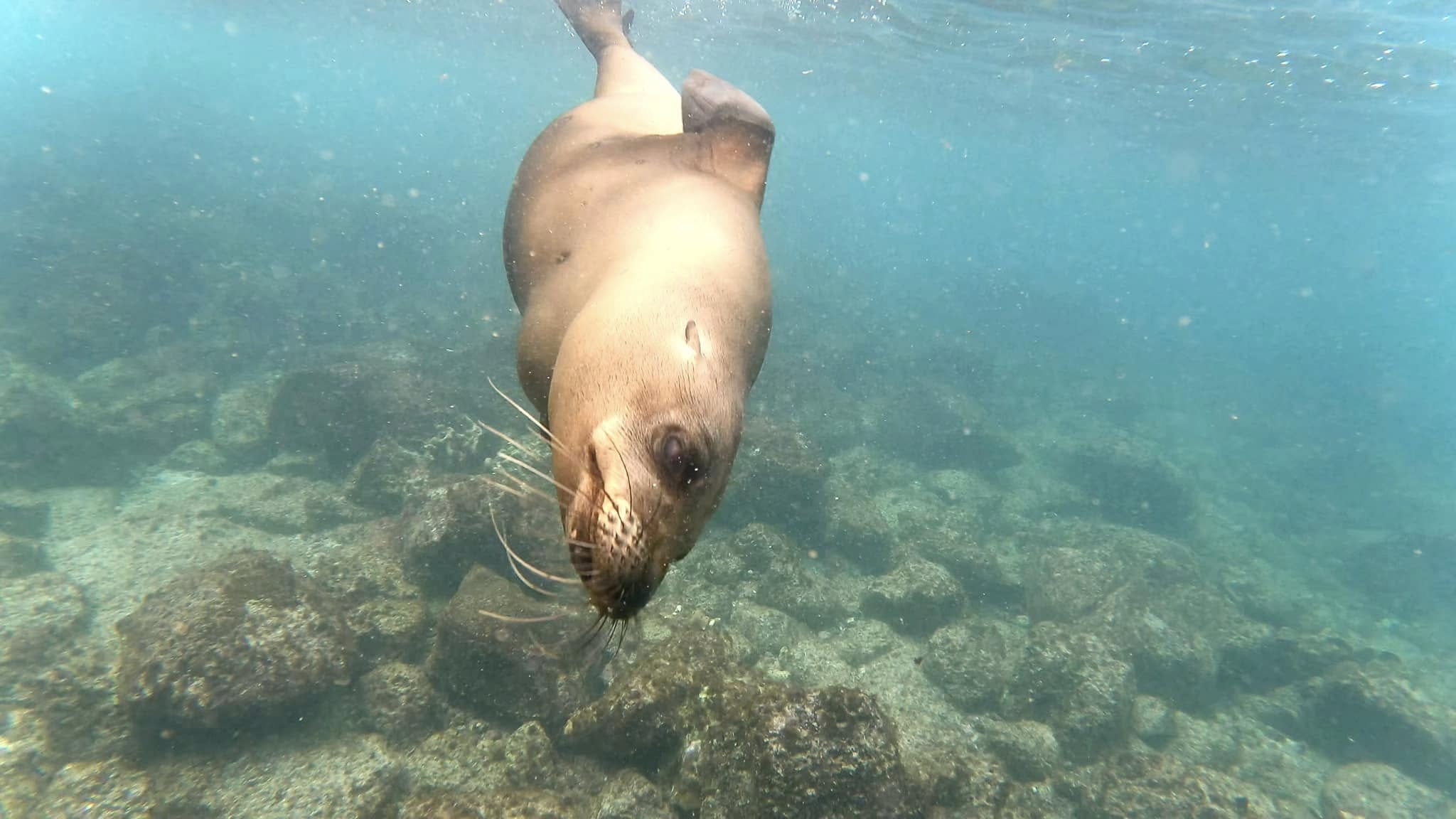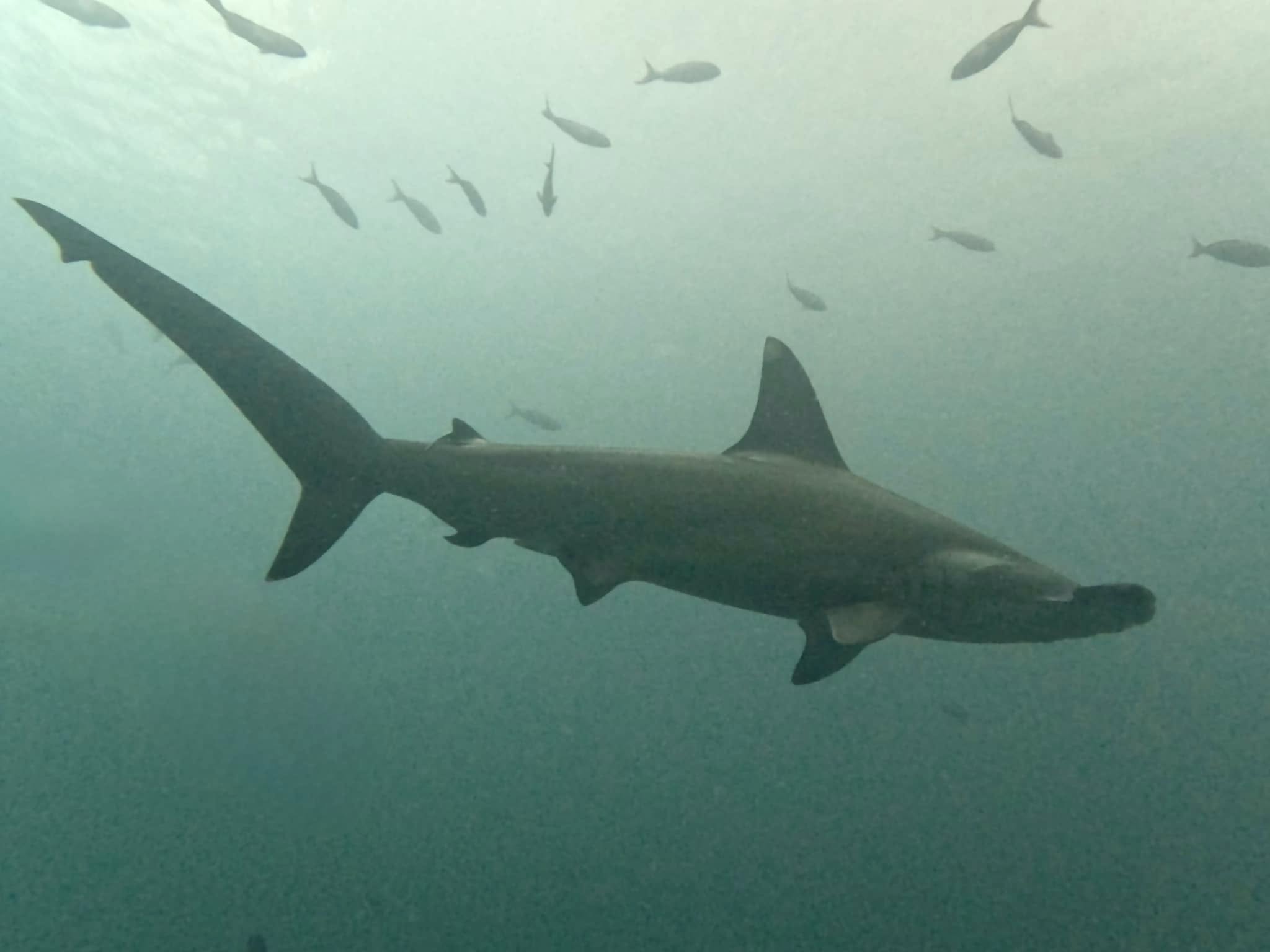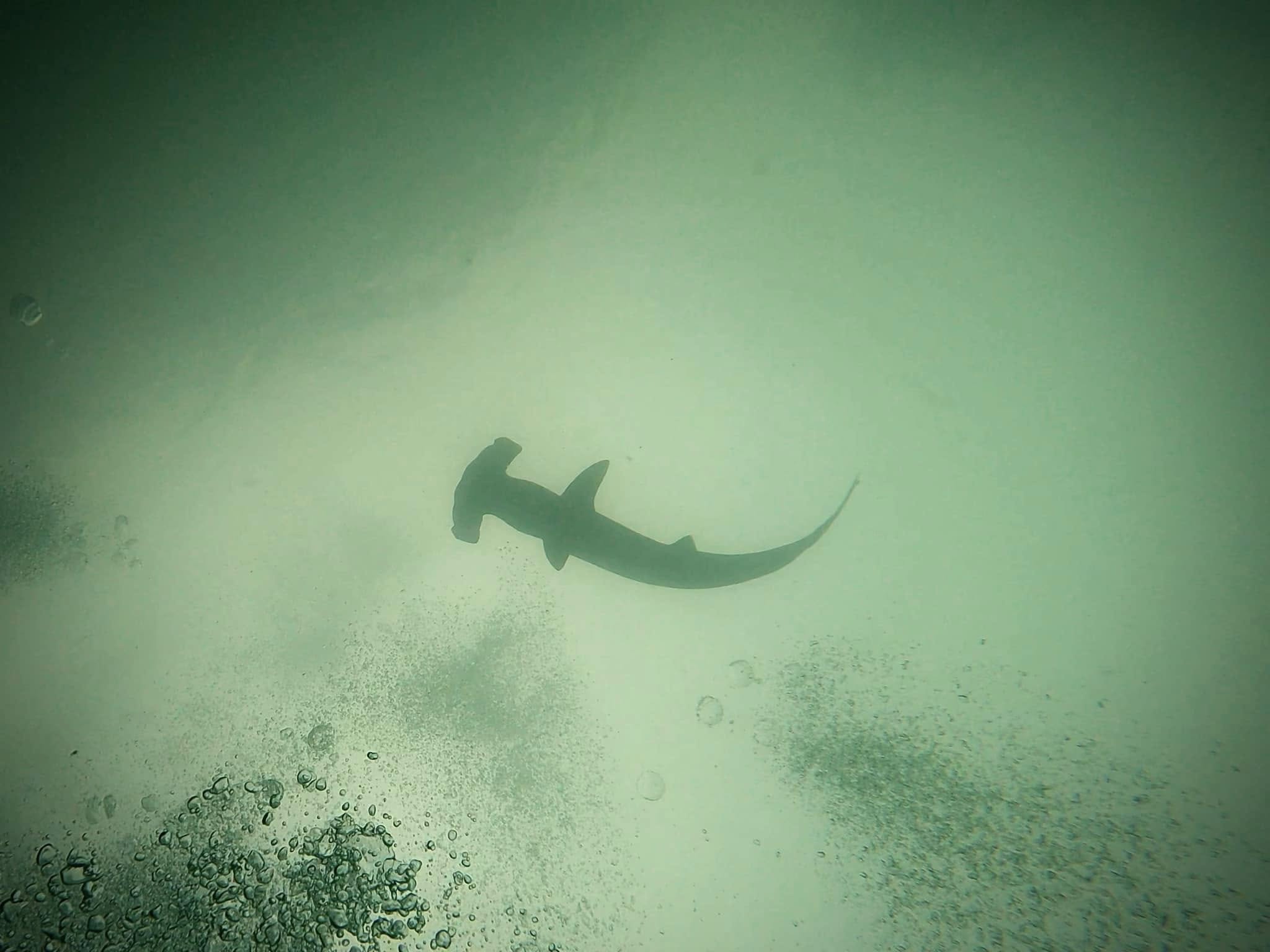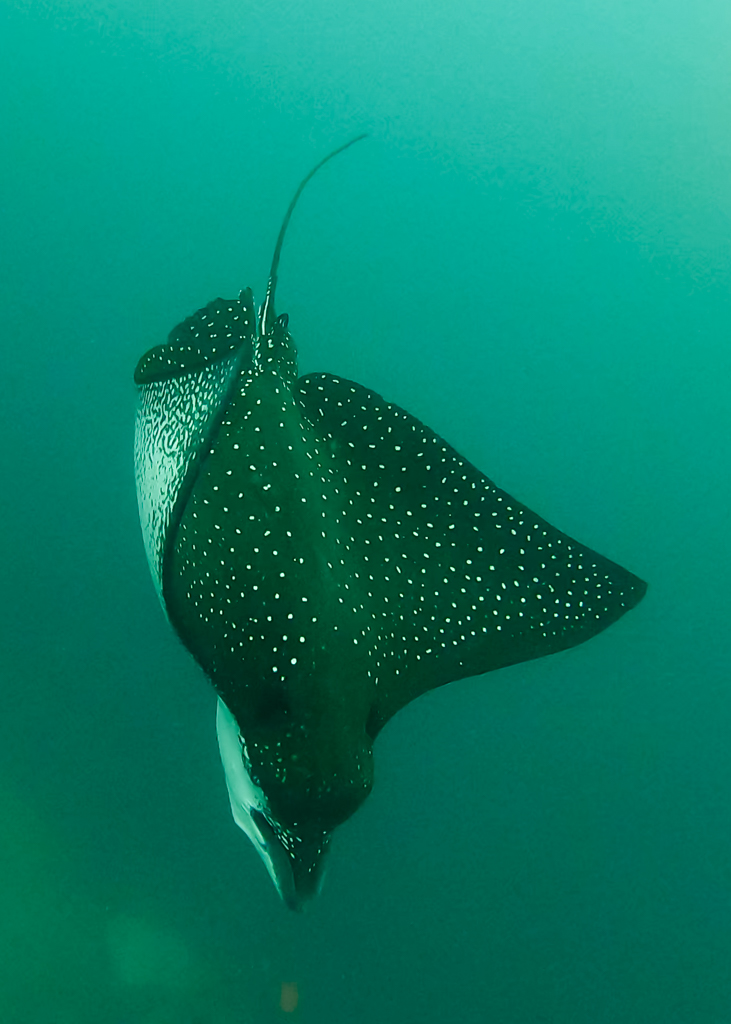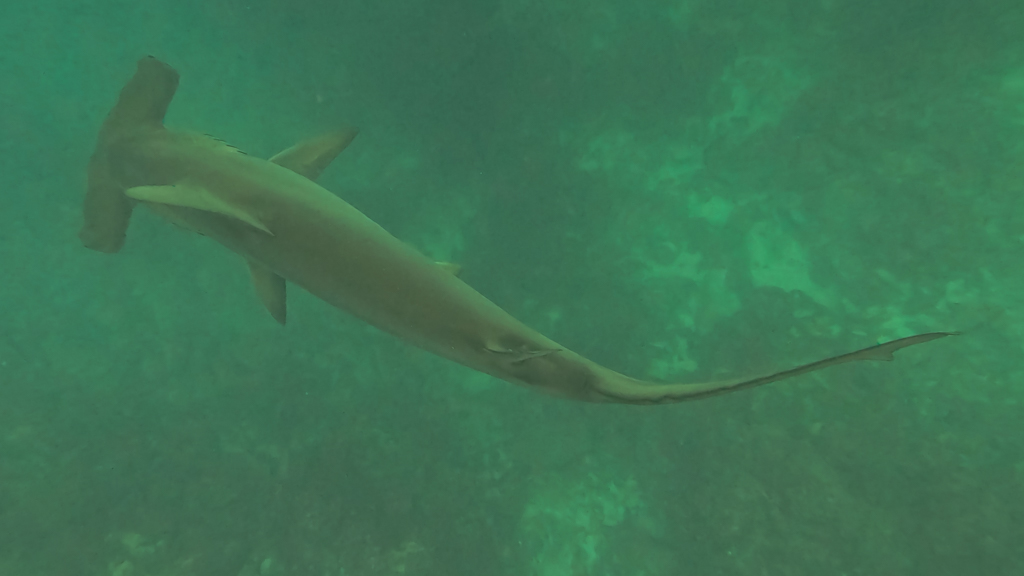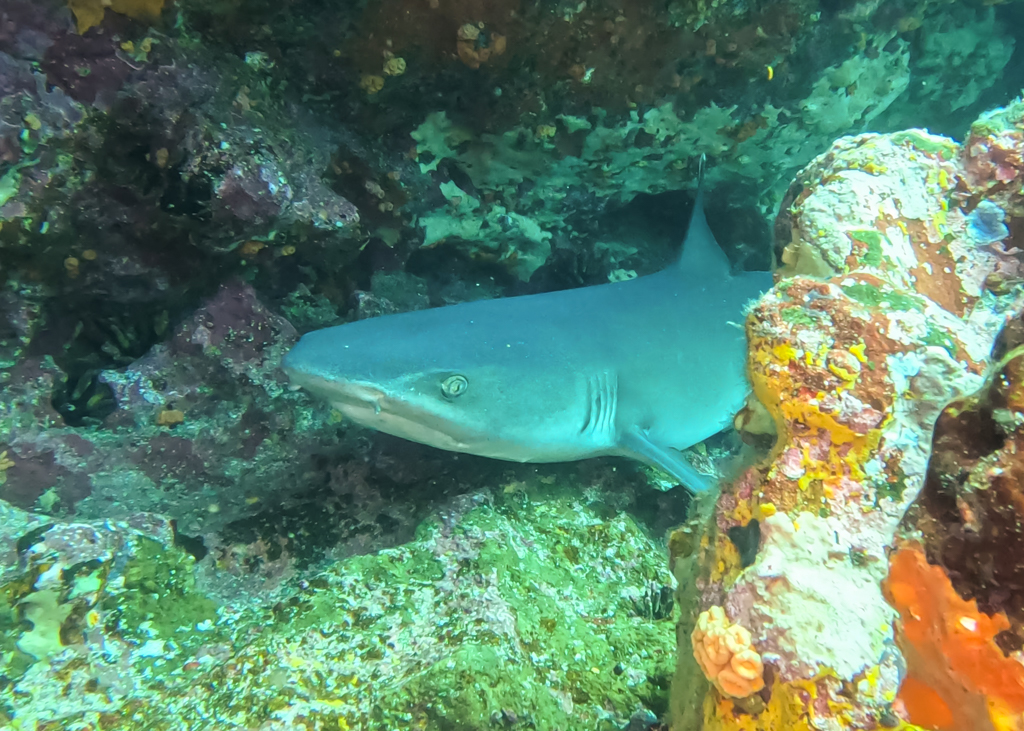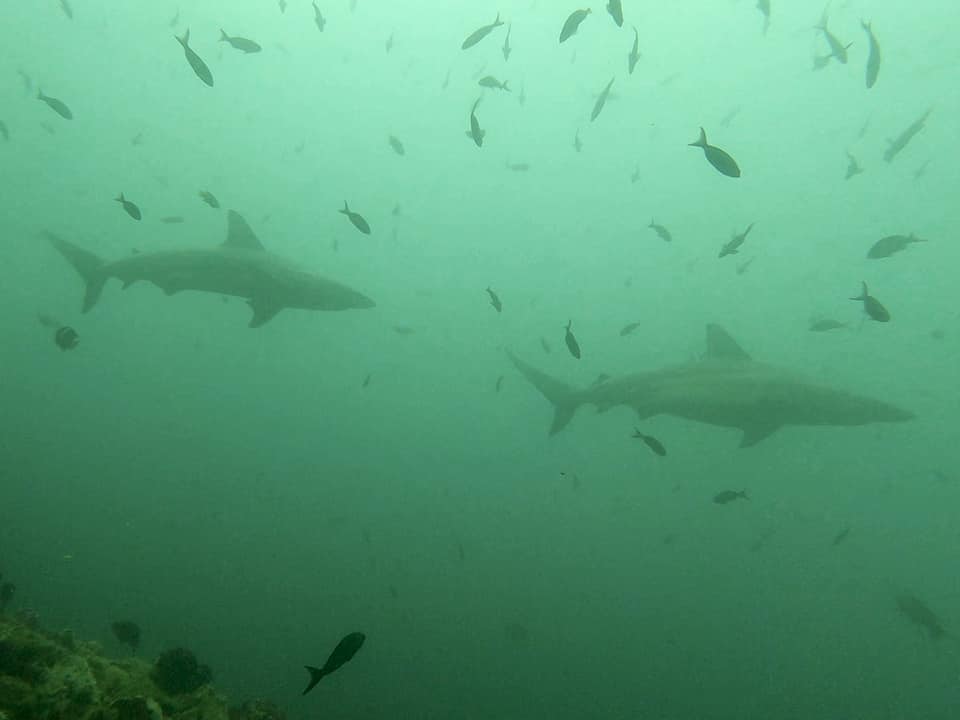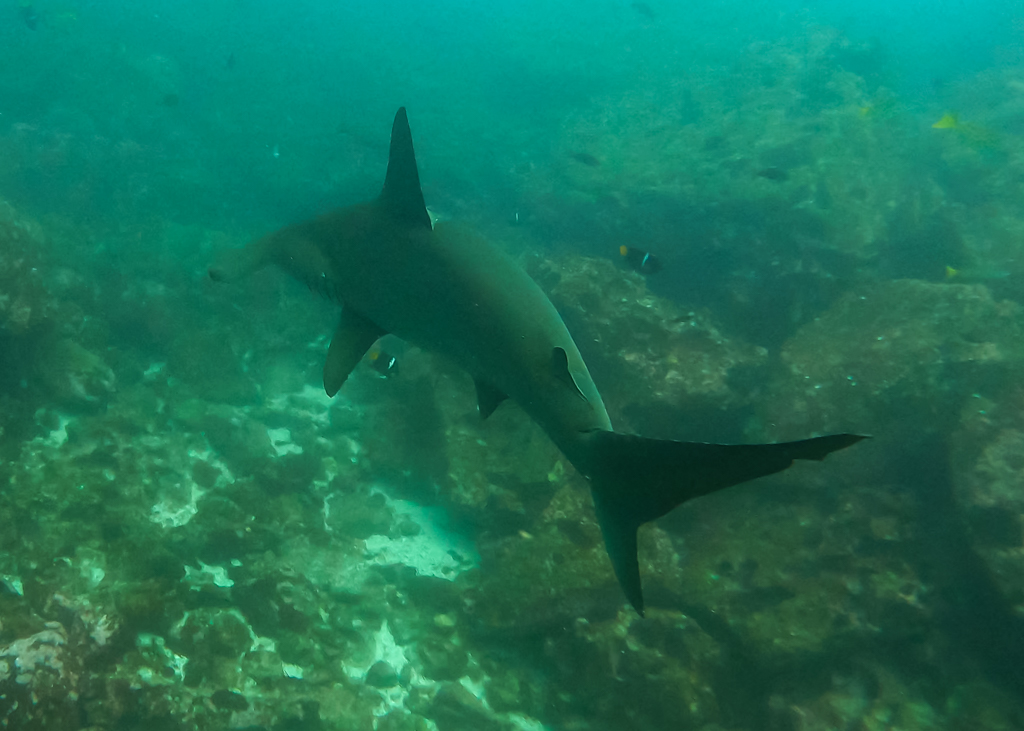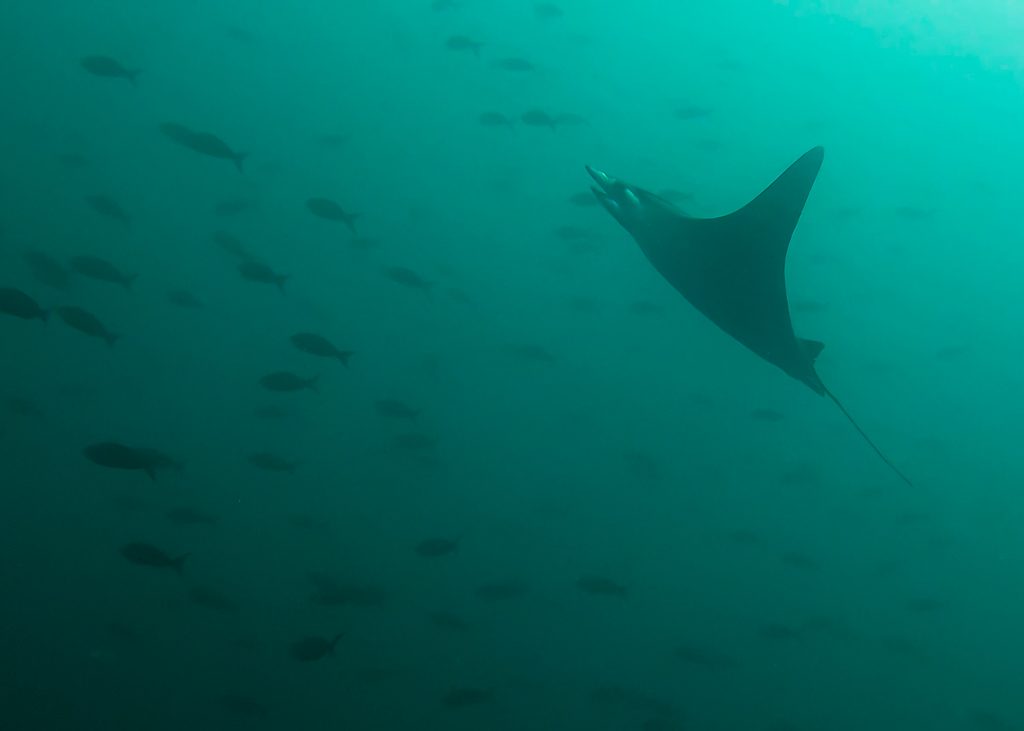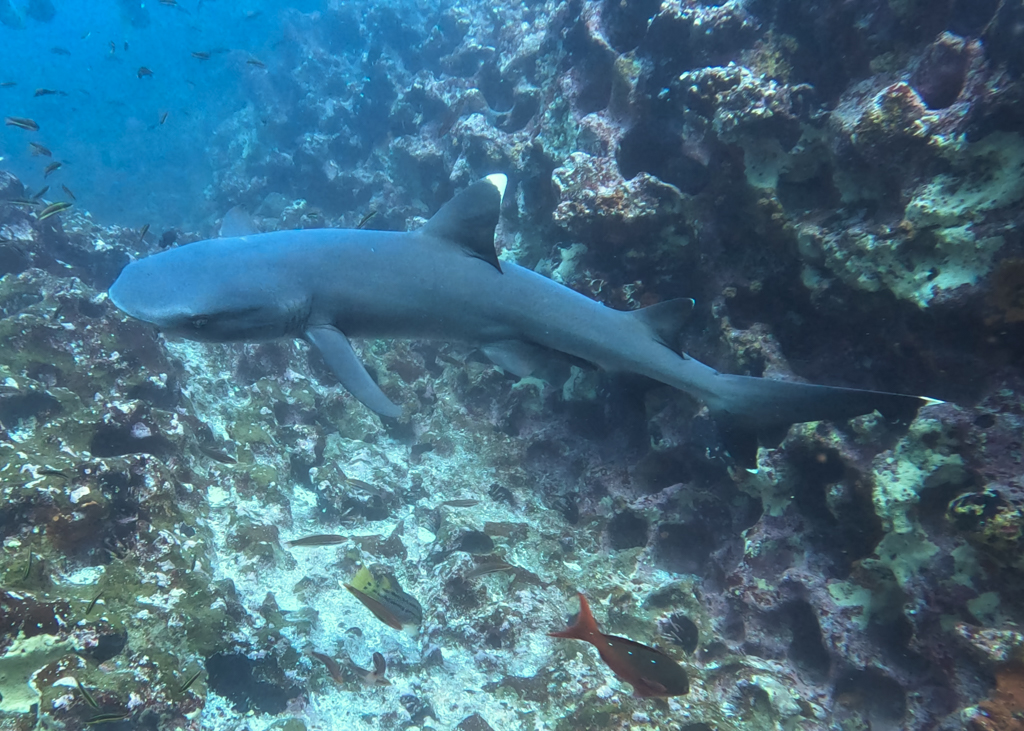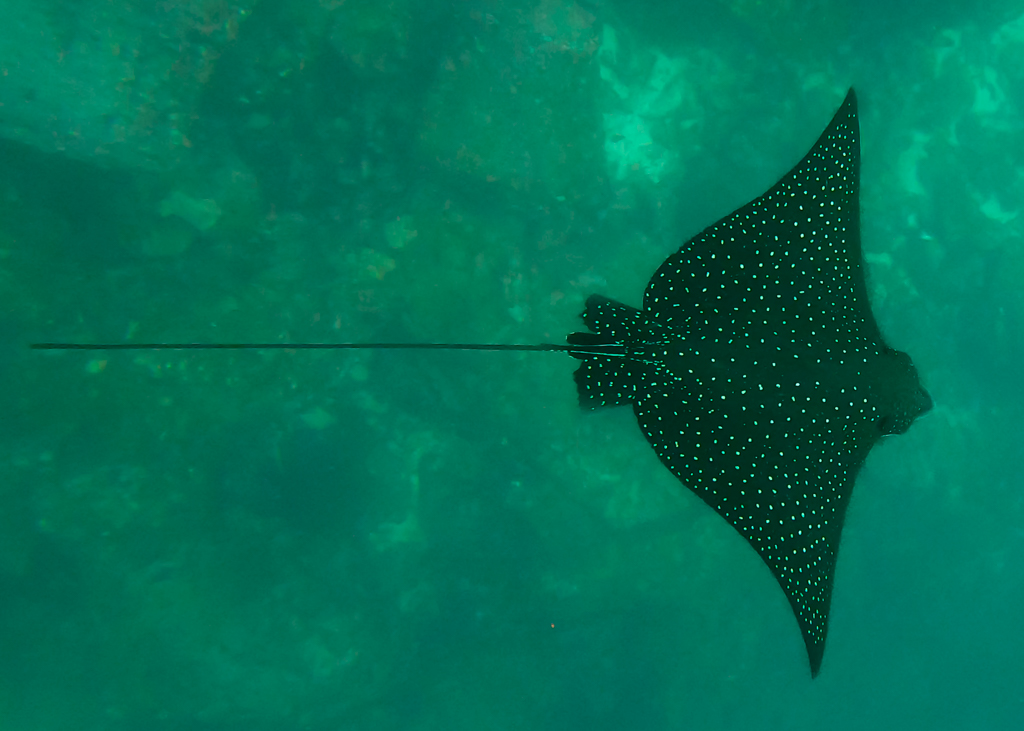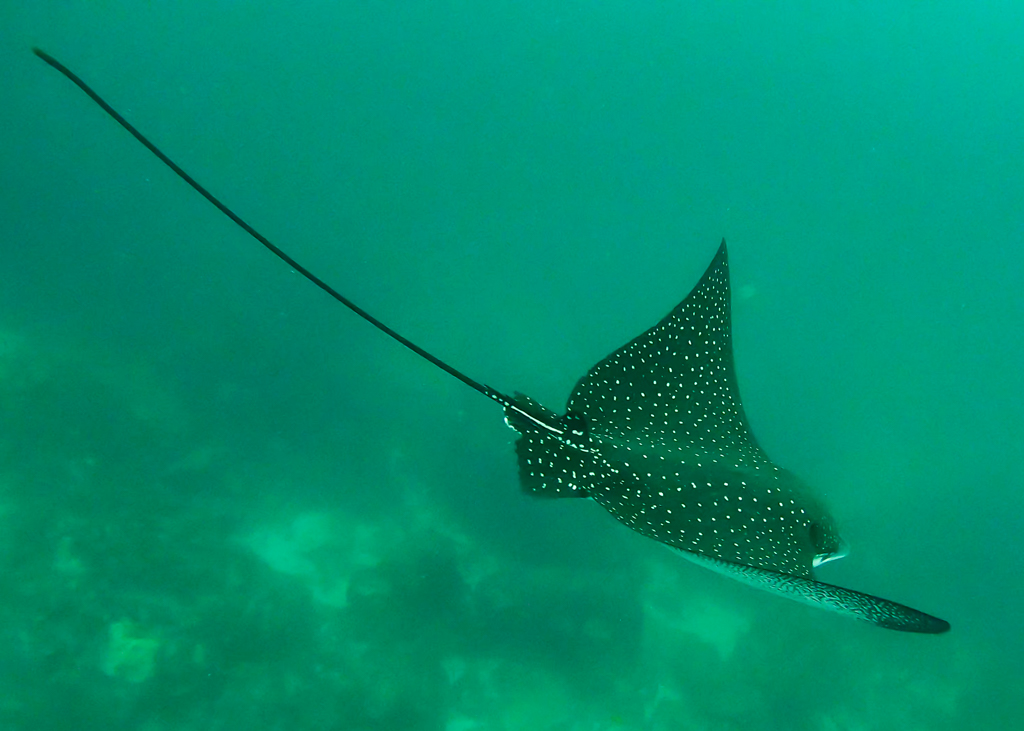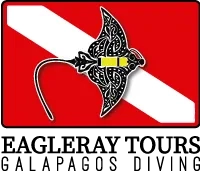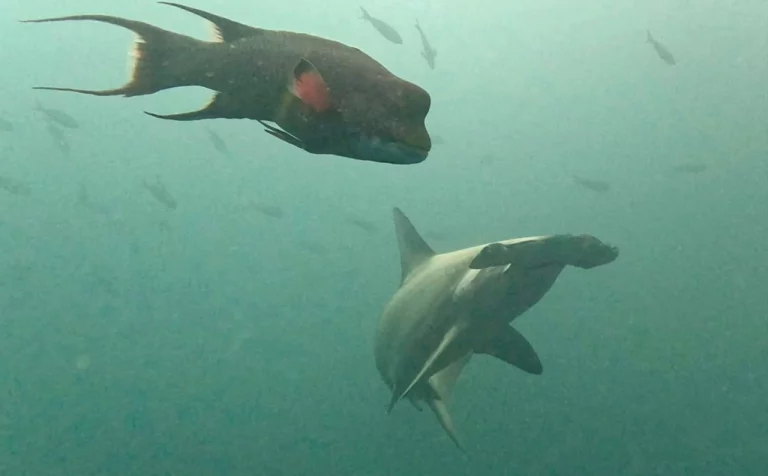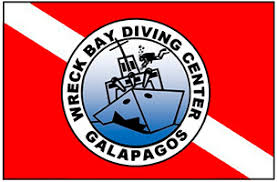Scuba Diving in the Galápagos
Share...
Home » Scuba Diving Destinations » Scuba Diving in The Galápagos Islands
My First Glimpse of the Galápagos
I never expected to fall in love with Galápagos diving, but after my first visit to the islands I knew I had to return and see what lay beneath the surface. Years ago, I explored the Galápagos aboard a small Celebrity cruise, hopping between islands, spotting marine iguanas and sea lions, and snorkelling alongside a baby sea lion. That moment stayed with me ever since.
Fast forward to December 2024 and I was back, this time with my dive certification, a GoPro, and a clear goal: to experience Galápagos scuba diving properly and capture the magic I had missed the first time.
Getting to the Galápagos
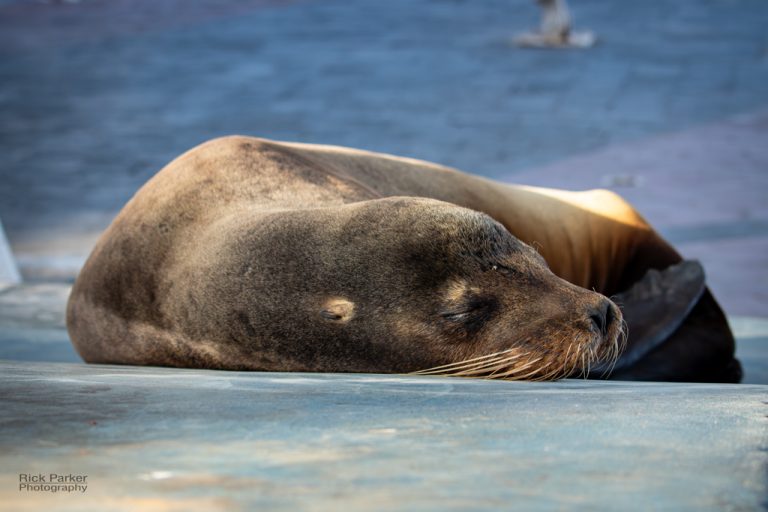
Before reaching the Galápagos, I had already spent some time in Costa Rica. From there, I headed to Quito, Ecuador, for a few nights, which turned out to be a great city to explore before the diving began. It’s definitely worth spending a little time there if you can.
When it came to travelling to the islands, I booked an internal flight from Quito to Baltra, the main entry point to the Galápagos. The flight price was reasonable, and the process was straightforward once you knew what to expect.
Transit Control Card and Biosafety Declaration
At Mariscal Sucre International Airport in Quito, there’s a Galápagos Islands registration booth where you must complete your Transit Control Card before flying. This form, managed by the Governing Council of Galápagos, tracks how long visitors stay in the islands. You can fill it in online in advance or scan the QR code at the airport.
In addition to this, travellers must complete The Galápagos Biosafety Sworn Declaration. This form helps control invasive species in the islands by confirming that you are not carrying biological materials such as seeds, plants, or animals. The declaration is quick to fill out but plays an important role in protecting the fragile Galápagos ecosystem. You can complete this online form up to 48 hours before your flight to Galápagos and it only takes a few minutes to do.
Airport Checks and Park Fees
Once at the booth, your passport is checked and you pay a small $20 fee for the The Galapagos Transit Control Card. After that, your bags must go through a mandatory biosecurity inspection. All luggage is scanned and hand-inspected by officials to help protect the environment. Checked bags are then sealed, and these seals cannot be removed until you arrive in the islands.
When you land in Baltra, you’ll also need to pay the Galápagos National Park fee, which at the time of my trip was $200 per person. I was told it was cash only, and I nearly ran into trouble trying to withdraw money at the airport in Quito. The ATMs are after the desks in Baltra, and there aren’t any beyond security in Quito, so plan ahead. Thankfully, they did accept cards at one of the counters when I arrived, which was a huge relief.
Diving from Santa Cruz Island
Staying on Santa Cruz
This time, I based myself on Santa Cruz Island, staying at Captain Max B&B, a small, welcoming spot with friendly hosts and proper good breakfasts (yes, the eggs deserve a mention). Unlike the cruise experience, staying overnight on land meant I got to see the quieter, local side of the island once the day-trippers left: peaceful streets, sunset views, and sea lions sleeping on the benches.
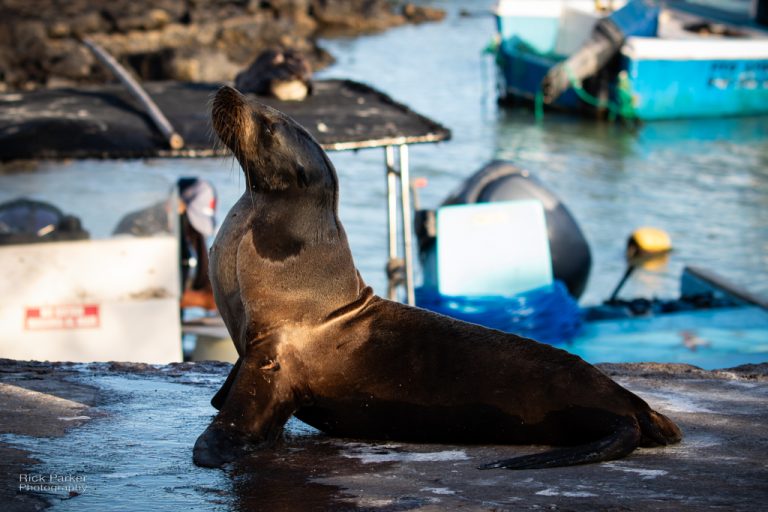
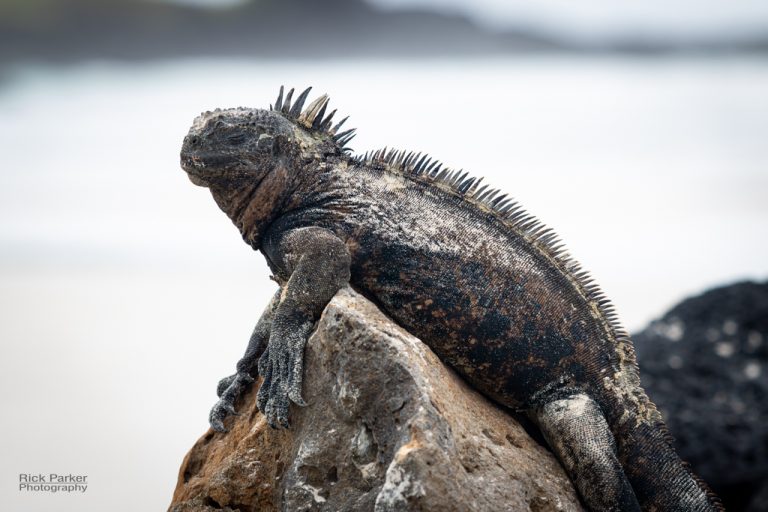
Choosing Eagleray Tours
I booked four days of diving with Eagleray Tours Dive Centre, and they were brilliant. They picked us up from the B&B each morning and transferred us across the island to the ferry terminal, where their dive boat was docked. The crew were friendly, the boat was well equipped, and between dives they handed out freshly baked pain au chocolat.
After diving, we were dropped off back in Puerto Ayora for a hot, sit-down lunch included in the trip.
Dive Sites We Visited
- Daphne Minor: No hammerheads this time, but a pod of playful sea lions more than made up for it. Curious, energetic, and amazing to watch underwater.
- Seymour Island: Classic Galápagos reef diving with turtles, rays, schools of fish, and decent visibility.
- Gordon Rocks: Easily the highlight. I saw a Mola Mola (Oceanic Sunfish) basking at the surface, then again at depth. Soon after, hammerhead sharks appeared, slowly cruising through the blue. It was breathtaking.
Ferry to San Cristóbal
Expect the Unexpected
To get to the next stop, San Cristóbal Island, you have two options: take a pricey inter-island flight or brave the public ferry. I went with the ferry.
Boarding isn’t exactly a streamlined affair. You’re loosely directed into a queue at the dock, then packed into a small water taxi that shuttles you out to the main ferry, basically a converted fishing boat. Once onboard, bags are stowed wherever there’s space, and sea sickness bags are handed out before departure, and for good reason.
Top tip: take sea sickness tablets, even if you’re normally fine. The crossing was rough, and the bloke next to me turned a shade of green I’d never seen on land. Not the comfiest journey, but we made it.
Diving San Cristóbal & Kicker Rock
First Impressions
Arriving at Puerto Baquerizo Moreno, I was greeted by a colony of sea lions, far more than on Santa Cruz. Pups were lounging along the dock, completely unfazed by people. I stayed at Hostal Terito, a simple and friendly place about 15 minutes from the harbour. The owner did not speak much English, but he was incredibly helpful. Note to self: learn more Spanish.
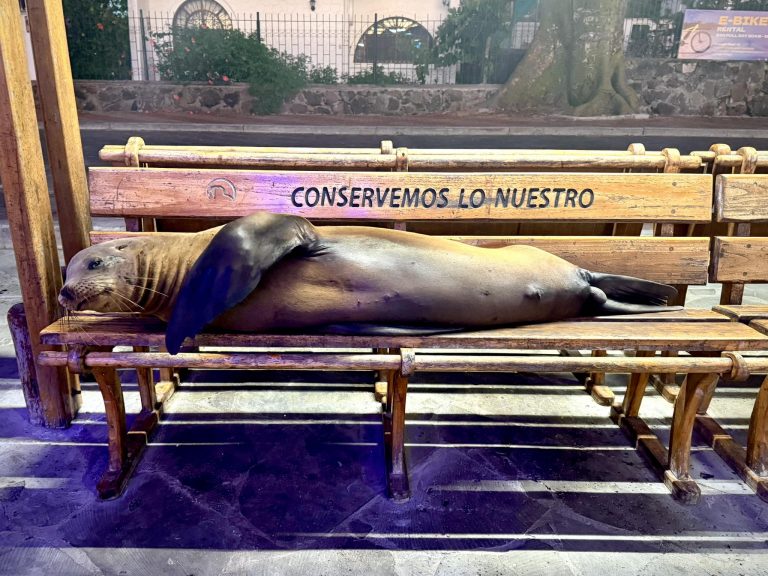
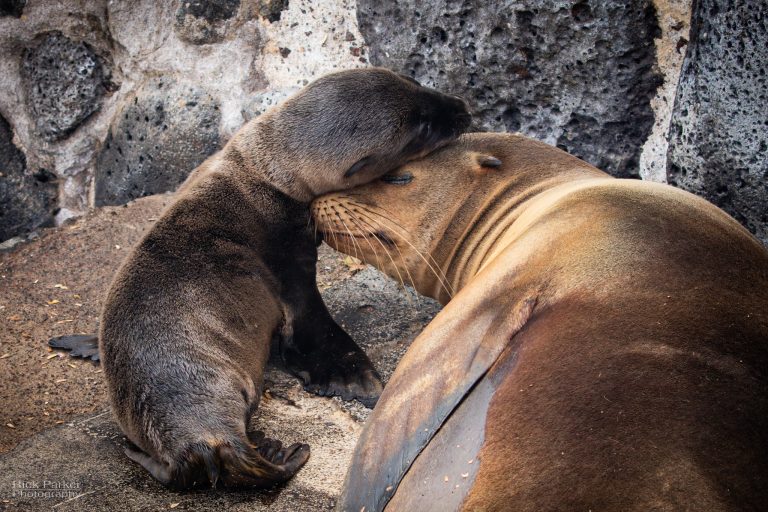
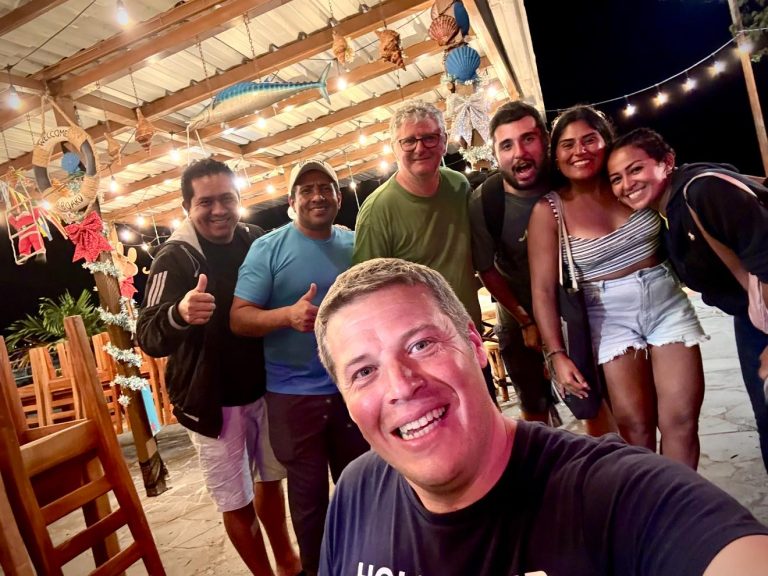
Diving with Wreck Bay
I booked a day’s diving with Wreck Bay Diving Center, and they were excellent. The day before the trip, we stopped by the shop to fit equipment and complete the paperwork. I always bring my own mask, fins, and computer, but it was good to see their rental gear was well maintained.
The dive site was the legendary Kicker Rock (León Dormido), towering, remote, and filled with marine life. Our dive master had us wait quietly behind a rock wall, and soon enough, hammerheads appeared, gliding past in formation. It was incredible, but the best was still to come.
Killer Whales & A Perfect Ending
On the way back to shore, a pod of dolphins appeared alongside the boat. Then suddenly, two adult killer whales and a calf swam right beneath us, surfacing before and after the boat. It was completely surreal and unforgettable. No liveaboard, no crowd, just one of those rare nature moments that stay with you for life.

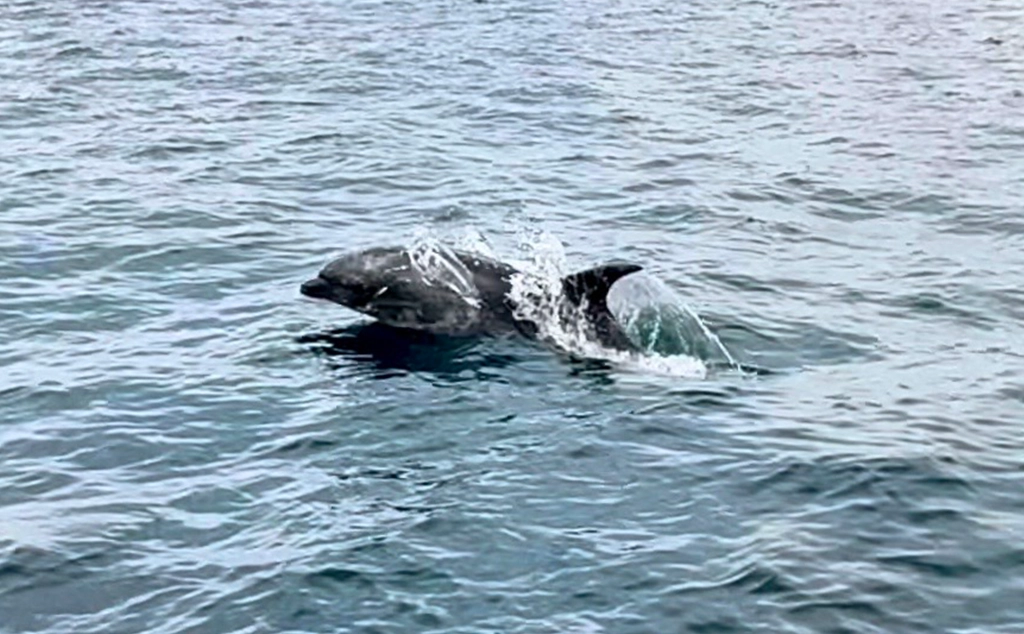
A Final Stop... Santiago, Chile
From San Cristóbal, I flew to Santiago, Chile via Guayaquil for a short city break before heading home to the UK. It was the perfect ending to an incredible trip, with good food, a relaxed pace, and a chance to decompress after some of the best diving I have ever done.
Galápagos Scuba Diving? Worth every minute.
If you are planning a dive trip to the Galápagos and wondering whether to go land-based, I would say absolutely. You do not need a liveaboard to have world-class diving, unforgettable encounters, and the kind of memories that stay with you long after you have dried off.
Galápagos Diving Gallery
A selection of my favourite images from the trip, including hammerheads, sea lions, and one unforgettable moment with killer whales. For this trip, I only had my GoPro with me, which captured some great memories, but looking back, it’s definitely worth bringing a more advanced camera setup for a destination like this. Since then, I’ve upgraded my gear, ready for the next underwater adventure.

